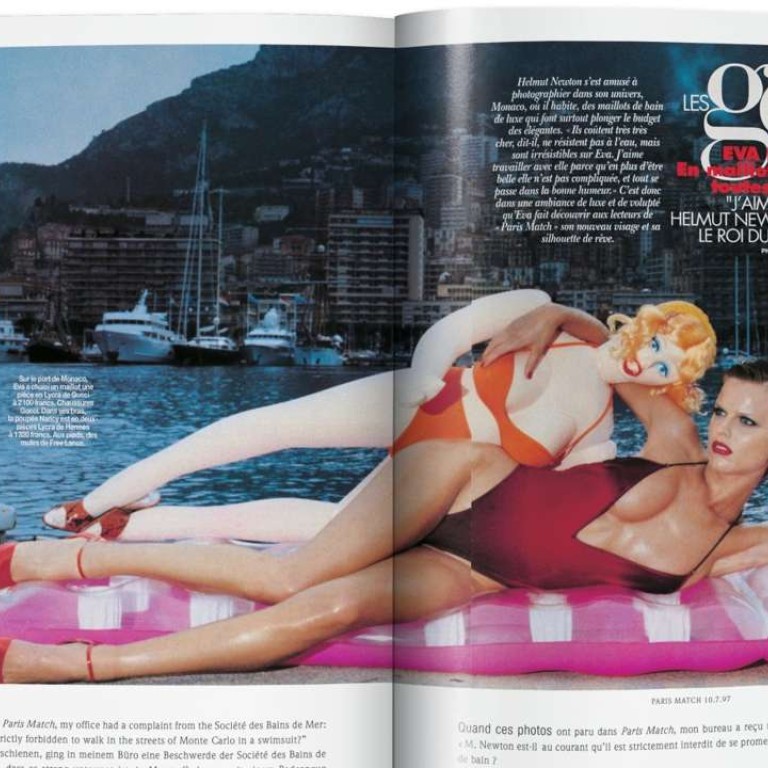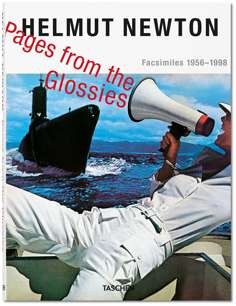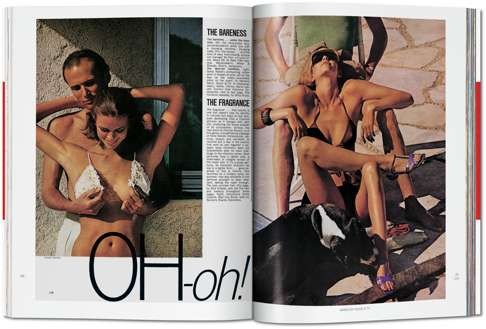
Book review: how Helmut Newton transformed fashion photography
Helmut Newton introduced fetishism to fashion glossies – and a new Taschen publication celebrates decades of his creativity

Taschen
4/5 stars
Boutique publisher Taschen is paying homage to the legendary German-Australian fashion photographer Helmut Newton with the publication of Pages from the Glossies. Spanning more than 40 years of his work, it documents his career, featuring a selection of magazine spreads carefully preserved by his wife, fellow photographer June Brunell.
“In my vocabulary there are two bad words: art and good taste,” the “King of Kink” Newton said in the 1989 documentary Helmut Newton: Frames from the Edge. And many of his works – which have graced the pages of Vogue, Elle and Playboy to name just a few – caused controversy, even outrage. He consistently (and not too subtly) explored themes of fetishism, sadomasochism and voyeurism, challenging the norms of fashion photography and marking a style that has been broadly imitated ever since.
Born in 1920 in Berlin, Newton started out as an apprentice to German photographer Yva (Else Simon), who would become one of his earliest influences, as would Hungarian photographer Martin Munkacsi and Austrian and Czechoslovak journalist Egon Erwin Kisch. He was lured by the romantic, adventurous image of photographers and journalists at the time, and some of his black and white works have a gritty 1930s noir photojournalistic feel to them.
Being from a Jewish family, Newton was put on a ship to China by his parents when he was 18, to flee Hitler’s persecution. He ended up stopping for two years in Singapore – where he worked a brief stint for The Straits Times and, he says, as a gigolo – then was sent on to Australia in 1940.
This new compilation from Taschen is accompanied by anecdotes from Newton. He recalls the euphoric moment he first saw one of his photos make the cover of a magazine, the Australasian Post in Melbourne. The idea that thousands of people would see his work seduced him.

In the 1950s he was hired by Australian Vogue – this would mark the beginning of a decades-long relationship with the magazine. He later moved to Paris, and joined French Vogue in 1963. His Mata Hari photo story for Vogue Europe caused a stir for its glamorous portrayal of a female spy, posing at the Berlin Wall and later being led away from barbed wire fences by police.
A heart attack forced Newton to reassess and slow down in 1971, but his fame continued to grow. It reached a peak with his risqué “Story of O” shoot in 1975 for American Vogue, which saw him accused of promoting bestiality and sexual relationships between two women and one man. “This was the beginning of my notoriety and I never looked back,” Newton said.
That same year he photographed a naked girl in a bathtub full of goldfish (not entirely a success – the first school died, so for the shot the model had to be submerged in cold water). And through the ’80s his shots become ever more overtly sexual; models were either naked or clad in bits of leather, fur or wet swimsuits. He began focusing on staged portraits, a shift in aesthetic summed up by his 1982 “Big Nudes” collection, featuring Amazonian beauties towering in high heels.
By the time he died, in 2004, he was as much a celebrity as the iconic designers and faces he was shooting, and he had shot them all, from Catherine Denueuve and Yves Saint Laurent to Ines de la Fressange and Karl Lagerfeld, Daryl Hannah, Cindy Crawford and Eva Herzigova.
This book celebrates not only the evolution of his work, but also the relationship between his photographs and the glossy printed pages they appeared on. This too evolved over the years, from the big graphic fonts and geometric graphic design echoing the patterns on the dresses in the ’60s to his glittering extravagant colour double-page spreads in the ’70s.
You don’t need to be remotely interested in fashion photography to enjoy Pages from the Glossies – “enjoy” being the operative word here, as every page tells a story, provokes or amuses. Newton’s playful approach reflects in his work; he’d put beautiful women in often absurd situations, pushing their boundaries, as well as those of his editors, their readers and the industry as a whole.

